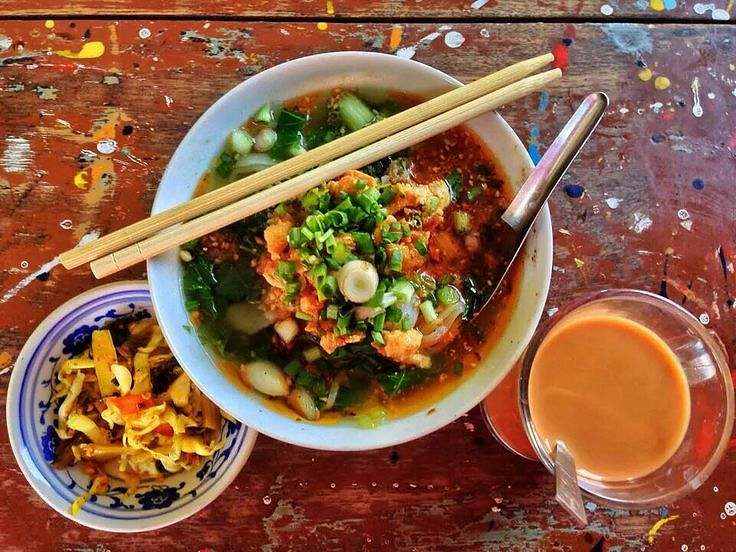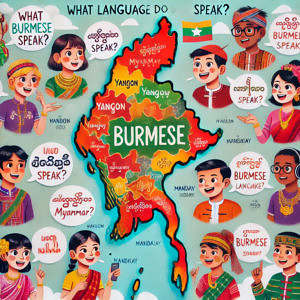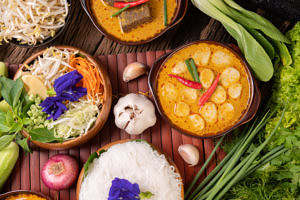What is Burmese Food and Why You Should Try It
Myanmar, formerly known as Burma, is a country rich in history, culture, and gastronomy. Nestled between India, China, and Thailand, Myanmar’s cuisine is a vibrant fusion of these neighboring culinary traditions, creating a unique flavor profile that is both intriguing and delightful. In this article, we’ll explore what Burmese food entails and why it’s a must-try for any food enthusiast.
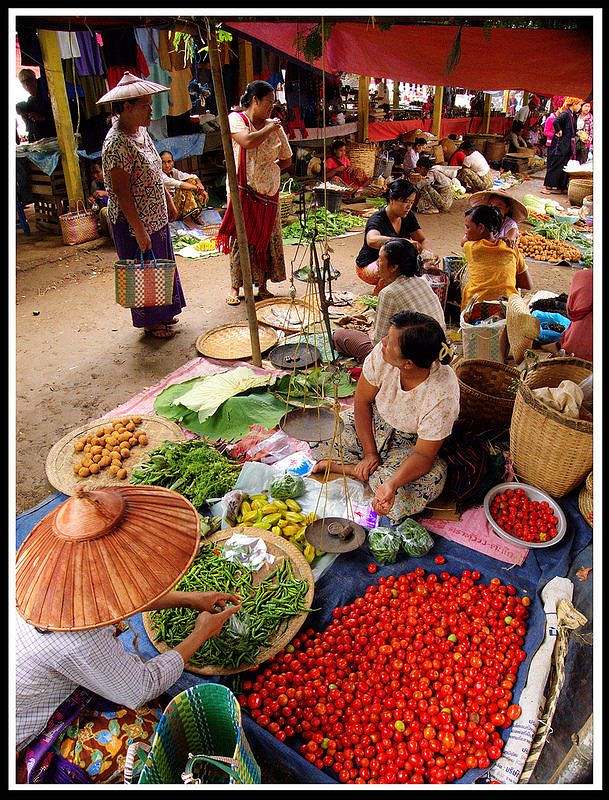
What is Burma Food?
Burmese cuisine is characterized by a wide variety of ingredients and an emphasis on balancing flavors. It is often overshadowed by the cuisines of its larger neighbors but offers an equally compelling taste experience. Central to Burmese cooking are ingredients like rice, fish sauce, ngapi (a pungent shrimp or fish paste), and a palette of herbs and spices that contribute to its distinct flavors, which range from sour and salty to umami and spicy.
What is Burma Food?
Burmese cuisine is characterized by a wide variety of ingredients and an emphasis on balancing flavors. It is often overshadowed by the cuisines of its larger neighbors but offers an equally compelling taste experience. Central to Burmese cooking are ingredients like rice, fish sauce, ngapi (a pungent shrimp or fish paste), and a palette of herbs and spices that contribute to its distinct flavors, which range from sour and salty to umami and spicy.
Key Ingredients of Traditional Burmese Food
A typical Burmese meal revolves around rice, a staple that anchors a variety of accompaniments including curries, salads, and soups. This culinary tradition is deeply tied to Myanmar culture food practices, which emphasize fresh ingredients and shared meals. Here’s a closer look at some of the essential components that make up the heart of Burmese cuisine:
1. Rice
Rice is the staple food in Myanmar and forms the base of most meals. The Burmese often eat plain white rice or fragrant rice varieties that are steam-cooked to perfection. Rice is not only a primary source of carbohydrates but also serves as a backdrop that complements the various flavors of the dishes it accompanies.
2. Ngapi (Fish Paste)
Ngapi, a pungent, salty fish or shrimp paste, is a quintessential element in Burmese cooking. It is used as a condiment and a flavoring agent in a myriad of dishes, from soups and salads to main courses. Its intense flavor is vital to achieving the authentic taste of many traditional Burmese recipes.
3. Fish Sauce
Fish sauce is another crucial ingredient that adds umami to Burmese dishes. Similar to ngapi but in liquid form, fish sauce is made from fermented fish and salt. It’s used extensively across Southeast Asia but holds a special place in Burmese kitchens for its ability to deepen flavors without overpowering the dish’s primary ingredients.
3. Fish Sauce
Fish sauce is another crucial ingredient that adds umami to Burmese dishes. Similar to ngapi but in liquid form, fish sauce is made from fermented fish and salt. It’s used extensively across Southeast Asia but holds a special place in Burmese kitchens for its ability to deepen flavors without overpowering the dish’s primary ingredients.
4. Onions and Garlic
Onions and garlic are foundational to the flavor profiles of Burmese cuisine. They are often used as the base for curries, stews, and other dishes, providing a savory depth that enhances the overall taste. Both are typically sautéed to bring out their sweetness and complex flavors before other ingredients are added.
5. Chili Peppers
The use of chili peppers in Burmese food can vary from mild to very spicy. Fresh, dried, and powdered chilies all find their place in the cuisine, allowing for a range of heat levels suited to different palates. Chili peppers not only add heat but also contribute a layer of flavor that is essential in many local dishes.
6. Lemongrass
Lemongrass is a fragrant herb widely used in Burmese cooking, imparting a fresh, lemony aroma that is unmistakable. It’s commonly used in marinades for meats, in soups like mohinga, and in various other dishes to add a bright, citrusy note.
7. Tamarind
Tamarind is used extensively in Burmese cuisine to add a sour note to dishes. Its tangy flavor is essential in balancing the rich and savory flavors of meats and vegetables. Tamarind can be found in sauces, marinades, and even in some refreshing beverages.
8. Turmeric
Turmeric is a spice that gives many Burmese dishes their characteristic yellow color. More than just coloring, turmeric adds a warm, earthy flavor and a slight bitterness that complements the complexity of Burmese spices. It is commonly used in curries and rice dishes.
9. Ginger
Fresh ginger is another key ingredient that adds a zesty, pungent kick to Burmese dishes. It’s often used in curry pastes, stir-fries, and as a component in marinades for meat and fish, providing a fresh contrast to the heavier notes of garlic and onion.
10. Coconut Milk
In some regions of Myanmar, particularly in dishes that show a Thai influence, coconut milk is used to create rich, creamy sauces and soups. It softens the spiciness of chilies and adds a mild sweetness that balances the robust flavors typical of Burmese cuisine
Must-Try Dishes
When considering what to eat in Myanmar, several iconic dishes come to mind. Mohinga, often considered the national dish, is a fish soup made with rice noodles, typically enjoyed for breakfast but savored any time of day. Tea Leaf Salad, known locally as Lahpet Thoke, mixes fermented tea leaves with nuts and crunchy beans, offering a burst of flavors. For noodle enthusiasts, Shan Noodles—a dish from the Shan state—provides a comforting bowl of rice noodles in a savory, spicy sauce with chicken or pork. The Burmese approach to Curry Meals involves gently cooked meats served with rice, vegetables, and a variety of condiments. Each of these dishes showcases the diversity and richness of Myanmar famous food.
[wpzoom_rcb_post id=”1762″]
Burmese street food and Myanmar snacks
No discussion of Burmese cuisine would be complete without mentioning its vibrant street food scene. From bustling markets in Yangon to quiet stalls in small villages, street food is an integral part of daily life in Myanmar. Popular snacks include Samosas, Mont Lin Ma Yar (a cake-like snack), and Barbecue Skewers, all of which reflect the local love for deep-fried and grilled treats. These offerings not only highlight Myanmar street food but also provide insight into the local lifestyle and eating habits.
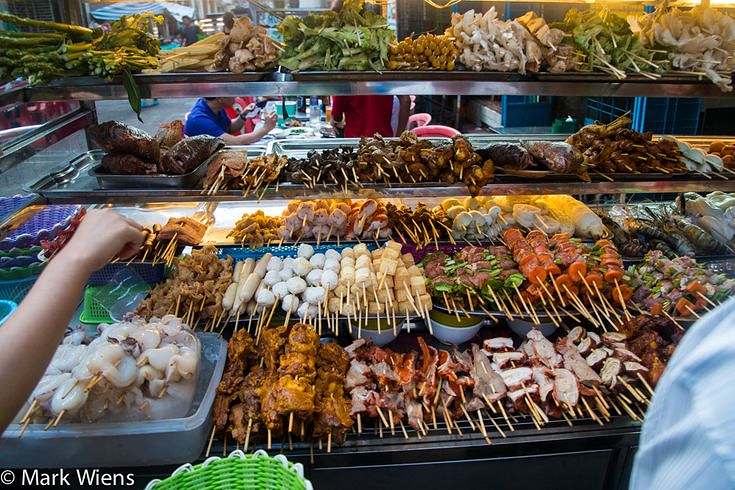
Burmese Food in the Global Asia Cuisine
While not as internationally renowned as other Asian cuisines, Burmese food is beginning to make its mark globally. Cities like Los Angeles, London, and Sydney now boast restaurants that specialize in authentic Burmese dishes, introducing global foodies to the flavors of Myanmar. These eateries serve as cultural ambassadors, promoting Myanmar shan food and more, thus fostering greater appreciation and understanding of Burmese culinary arts.
Why You Should Try Burmese Food
Burmese cuisine is not just about eating; it’s about experiencing a culture that prides itself on the ability to create complex dishes with simple ingredients. The health benefits of many Burmese dishes, which are often packed with herbs and balanced spices, add to their appeal. Trying Burmese food is an adventure in taste and a testament to Myanmar’s rich cultural heritage and culinary innovation.
The unique, bold flavors of Myanmar’s cuisine offer an exciting culinary journey unlike any other. With dishes that blend the sweet, salty, sour, and spicy, Burmese food is a testament to the country’s rich cultural mosaic and its ability to enchant the taste buds of locals and travelers alike. Whether you’re dining in Myanmar or at a Burmese restaurant elsewhere, the exploration of this vibrant cuisine is sure to be a rewarding experience.

